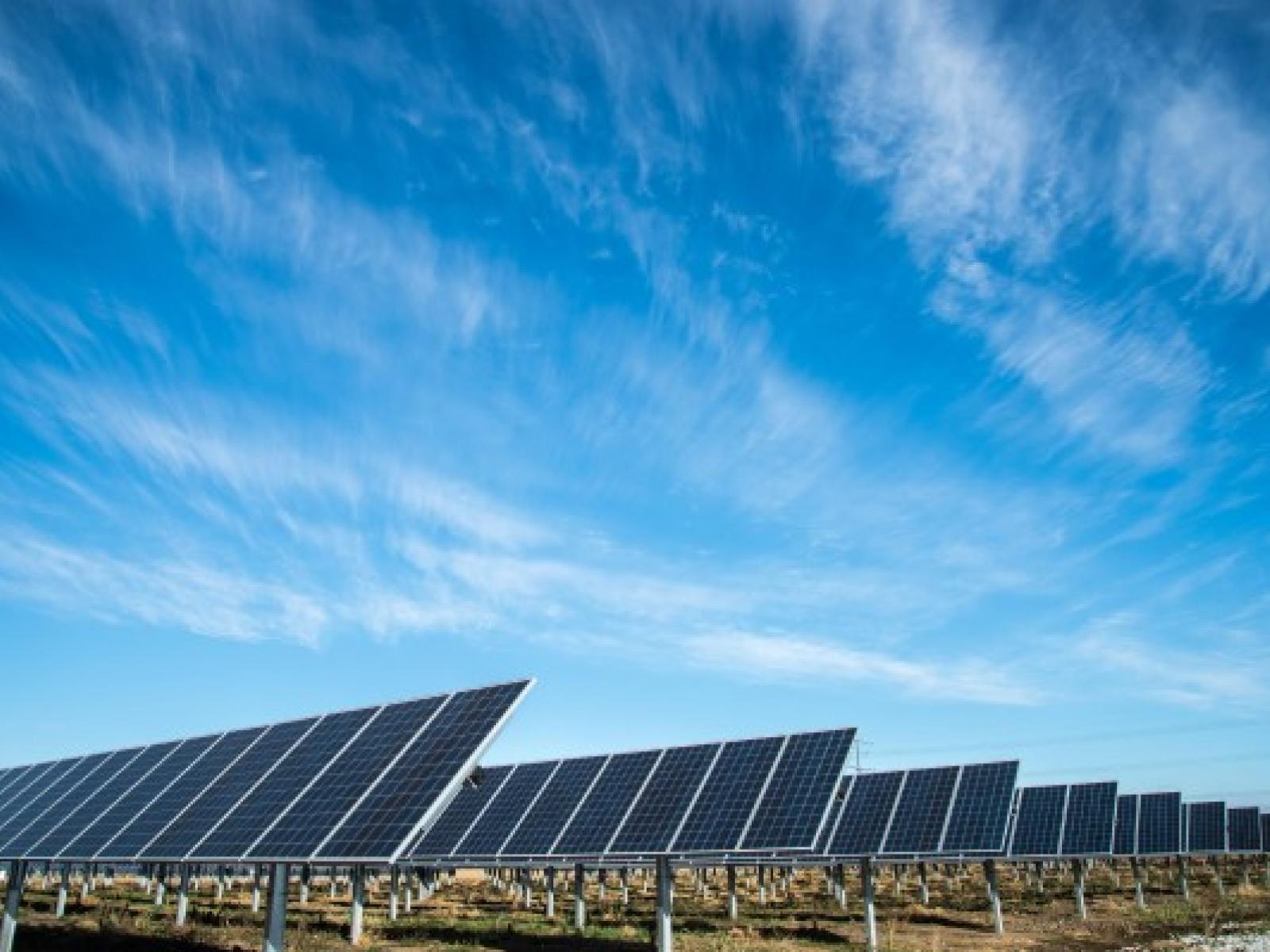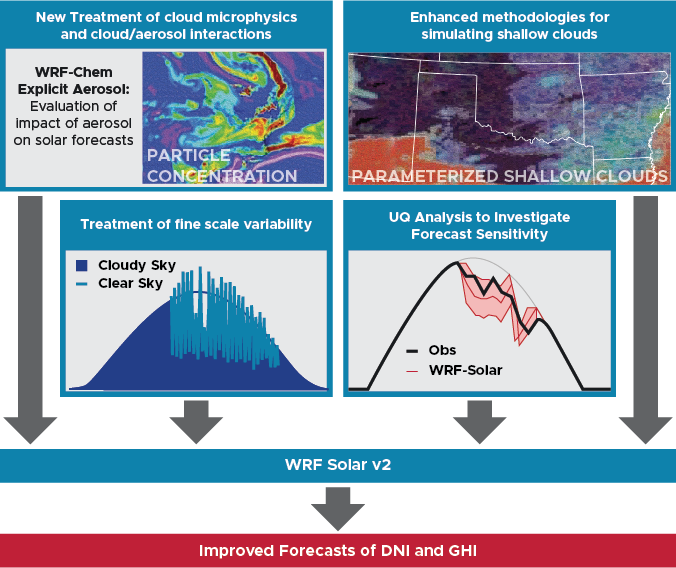Improving Solar Forecasting
The development of an enhanced version of WRF-Solar
By improving the Weather Research and Forecasting (WRF)-Solar model, this project aims to reduce forecast errors of Global Horizontal Irradiance (GHI) and Direct Normal Irradiance (DNI) by 25%, yield better forecasts of irradiance ramps, improve estimates of sub-grid scale variability, and more accurately estimate forecast uncertainty. This enables solar power system operators to know how much solar power will be generated over the coming hours and days, ensuring economic and reliable delivery of renewable energy to American households and businesses.

Utilities, grid operators, solar power plant owners, and other stakeholders would like to better forecast when, where, and how much solar power will be produced at the desired locations in the United States.
Photo by American Public Power Association on Unsplash
